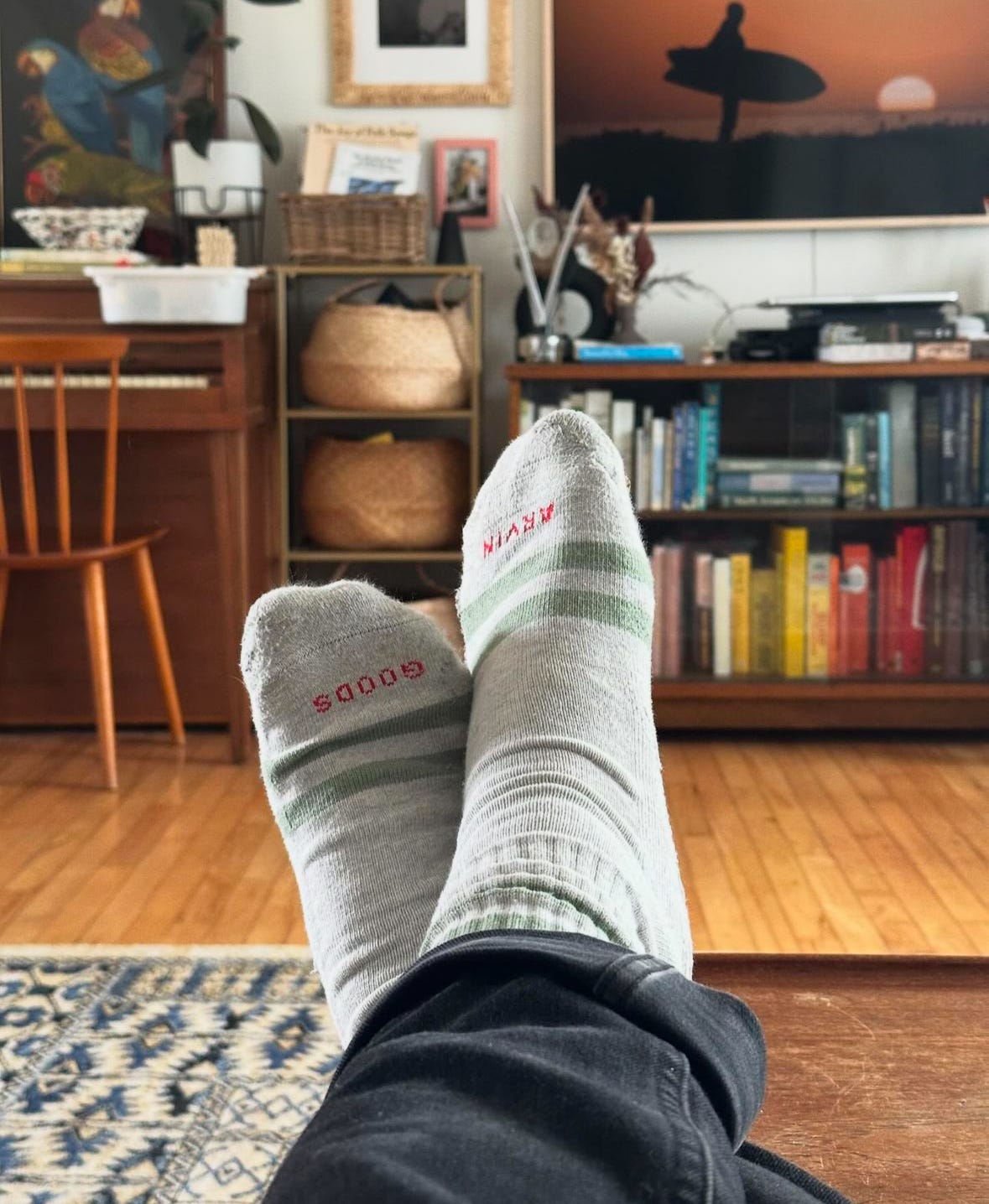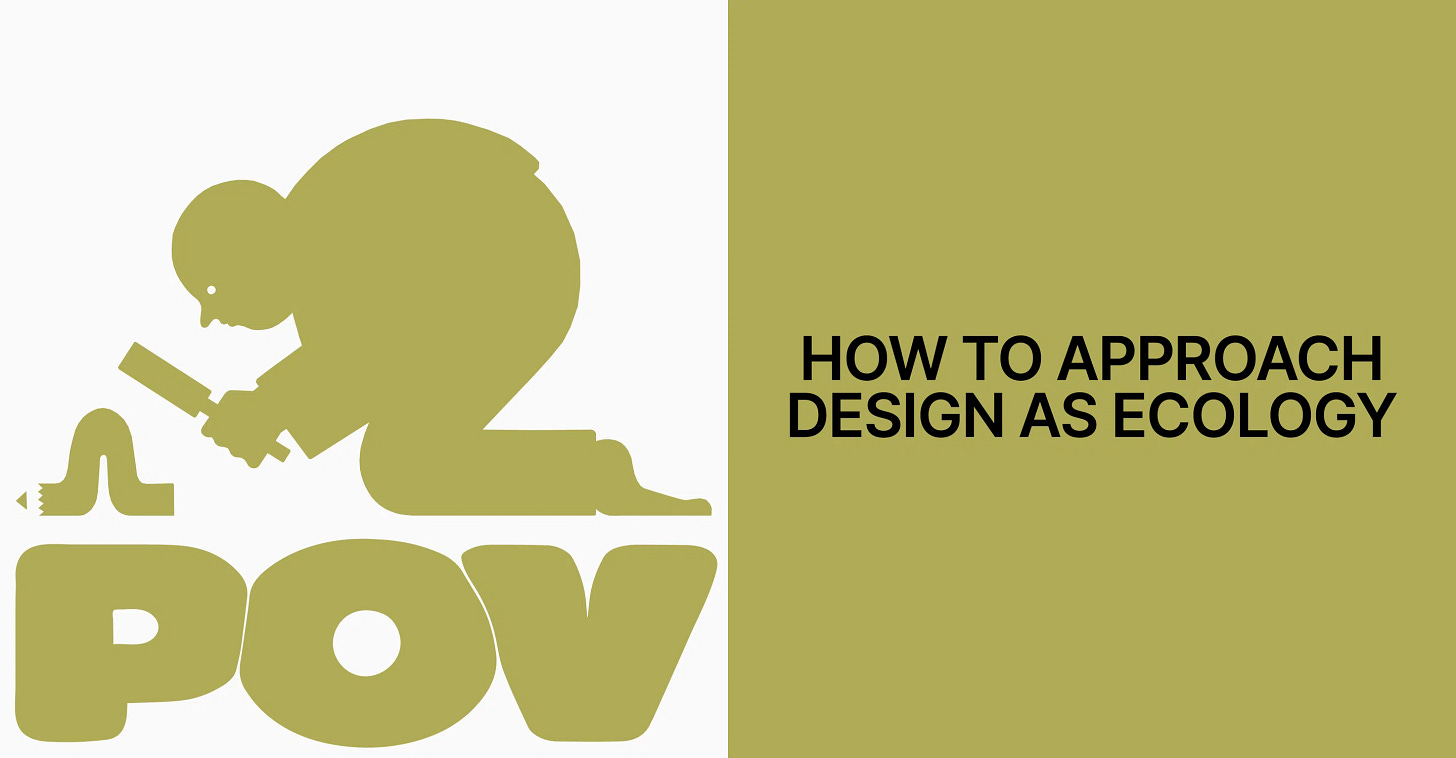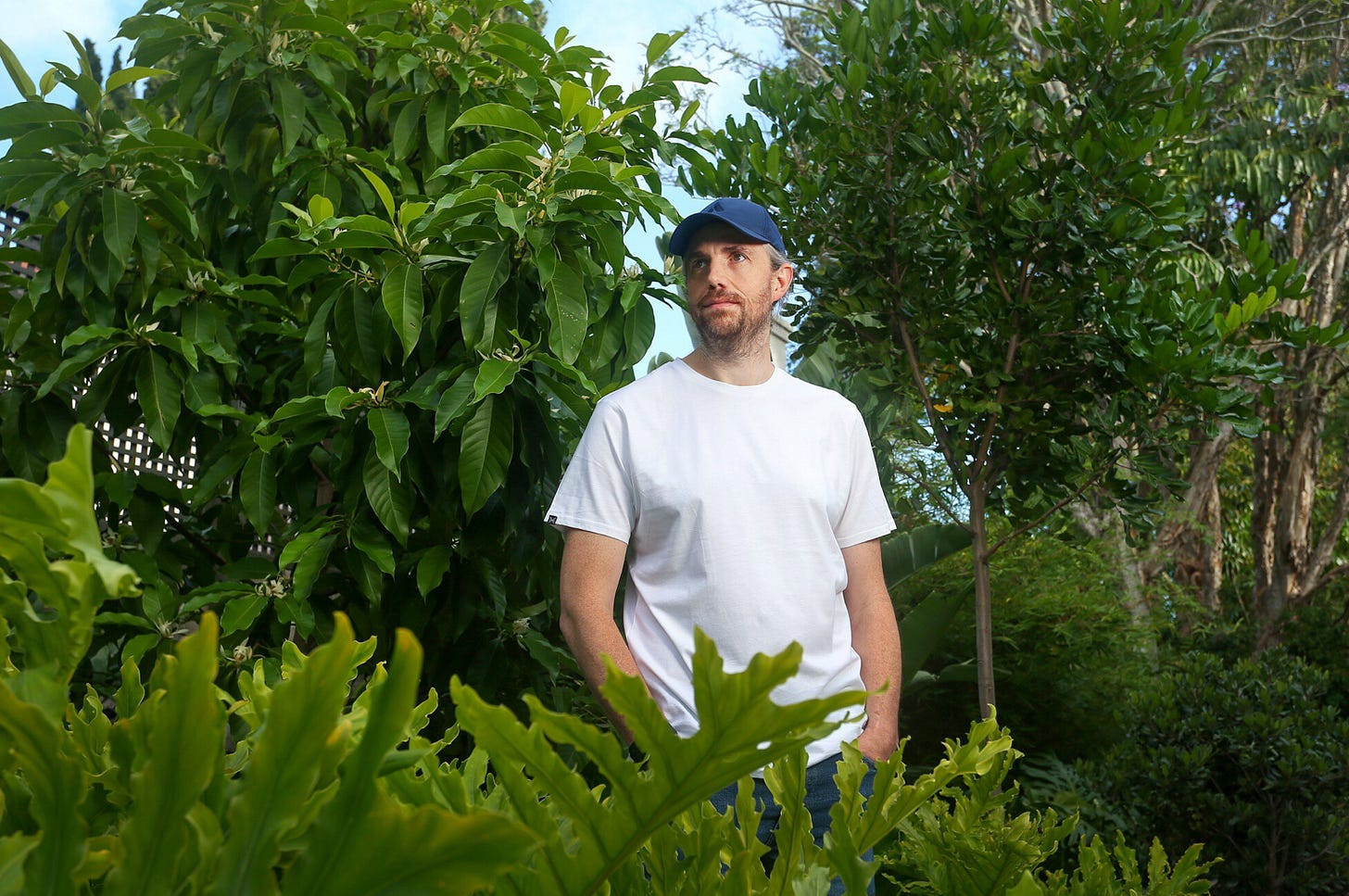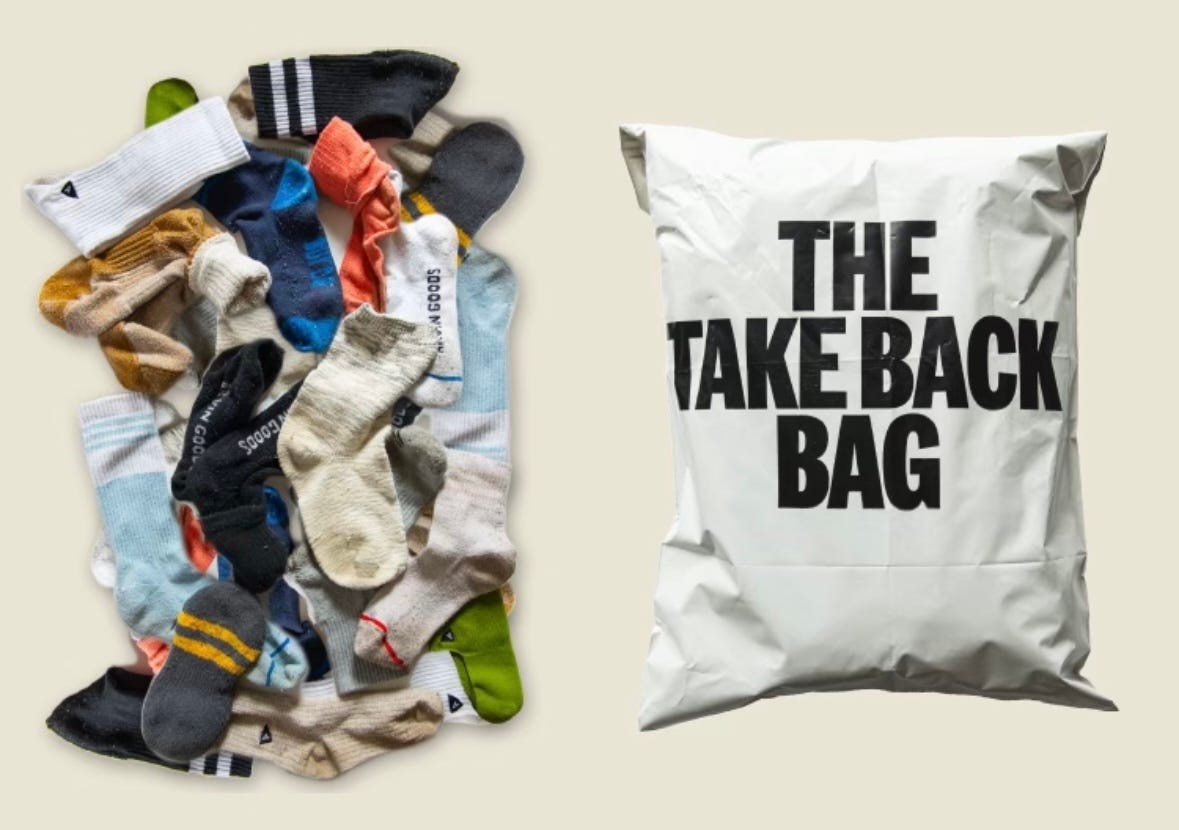🧦 High Fives All Around
Climate Influencers, Designers as Ecologists, Power From Australia, Sunday Grooves, Arvin Goods
Arvin News
Happy Sunday!
As you know we have been working over the past few years to transition our manufacturing over to Portugal. We are in the final steps to complete this transition. It has been a great learning experience for us, but also an example to the industry that a full switch is possible. One of the final steps in the process is to clear out existing inventory from the old supply chain. To help do this we are running our annual Summer Sale. Right now you can’t get 40% off sitewide. Use the code SUMMER40 at check out.
The game plan is to clear out existing inventory and release a new collection in July. We have some exciting new developments coming later this year. The lineup is clean and simple. We are sticking to our basics, and going to be delivering the best products in the market. Everyone says they make the best stuff. We really believe it, we have assembled what we think is one of the cleanest, simplest, low-impact supply chains in the market. Stick with us this year and see what we have been up to. In the meantime take advantage of the sale and grab some socks at a great price!
Thank you, have a great week.
Hope you enjoy today’s Clean Up. We would love to hear from you. Comment here on substack hit us on social, or email us at info@arvingoods.com. Have a great week. Cheers,
Team AG ✌️🧦
Stories Of The Week…
Fashion
Meet the Fashion Influencers of Climate Activism - VICE
The fashion industry produces up to 100 billion garments are produced each year. And each year, approximately 92 million tons of clothing ends up in landfills.
The mass consumption encouraged by fast fashion brands, media trend cycles, and advertising are huge contributors to the amount of clothes that end up in our trash. It’s something most of us are vaguely aware of, but with stats showing the fashion industry is responsible for roughly 10 percent of annual global carbon emissions—more than aviation and shipping combined—the scope of the issue is way bigger than we generally think. 👕📸
Design
POV: Designers need to think more like ecologists - It’s Nice That
Earth Month has just been and gone, and it afforded us at It’s Nice That the opportunity to reflect on a visual trend we’ve been noticing with increasing regularity: graphic design and illustration taking their cues from the natural world. Recently we’ve seen beautiful coffee-table books inspired by mycelium networks, typefaces that have been grown in a petri dish like fungi, and entire visual identities designed to resemble leaves and sinuous stems. Yet while these particular projects were all for worthy causes, we’ve also come across examples where this aesthetic is being adopted as a form of greenwashing, a way to make a brand seem more environmentally friendly than it is in reality.
“This is a dynamic in our industry that we observe and think about often, and one that doesn’t just apply to the environment, but also to a number of other socio-cultural realms,” says Lexi Visco, who, along with Calvin Rocchio, founded Companion—Platform, an independent creative studio based in the Bay Area (to see their work, take a look at our article on the studio here). Lexi and Calvin approach their projects, they say, as ecologists. “We arrived at this description by making a slight pivot from thinking about design systems in a vacuum and instead through more of an ecologist’s lens,” says Calvin. “When we begin a project, we often think about where it exists, what kinds of environments it will resonate within and what else might be going on in those environments that the project can also acknowledge or direct attention to.” As an ecologist might look holistically at an ecosystem or habitat, this approach to design prioritises context. 👨🏻💻♻️🌿
Industry
A Software Billionaire Is Betting Big on a Wild Climate Fix - Bloomberg Green
Moore’s Law says that the number of transistors crammed onto microchips will double every two years, magnifying computing power with a minimum cost increase. It’s been a key benchmark for technological progress since Intel Corporation co-founder Gordon Moore coined the rule in 1965.
The concept is instructive for Mike Cannon-Brookes, the billionaire co-founder of software giant Atlassian Corp. But that’s not the sector where it's most applicable. In his estimation, technology’s most important law applies to the radical transformation of the energy system in the coming decades.
“Moore’s Law is not a law of physics, it’s a law of belief,” the 44-year-old Cannon-Brookes says during a three-hour interview over dinner in Manhattan this past winter. “That belief, though, doesn’t happen with just daydreaming. It happens with really freaking smart people that have been paid a lot of money at Intel and lots of other companies to make that happen. But it starts with, ‘I believe people will need lots more chips in the future and that there will be a market.’”🔋☀️
Entertainment
Some easy going tunes for your Sunday lounge session! 🔊🧦
'The Clean Up' is a weekly newsletter that mixes in some Arvin Goods news, products, as well as stories we saw during the week that are worth a share. From books to podcasts, sustainability to business news, we try to keep it interesting, and fun. If you are not a subscriber, sign up and join everyone who receives The Clean Up directly in their inbox every Sunday.








